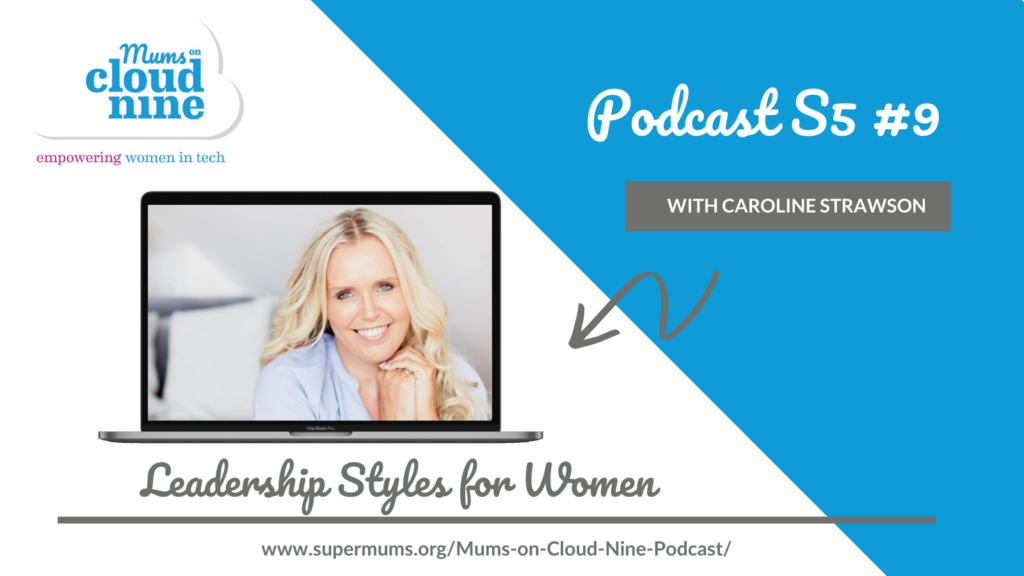Leadership Styles – How to Embrace Self-Leadership
By Jennifer Wood

Self-leadership is the practice of understanding who you are, identifying your desired experiences, and intentionally guiding yourself toward them. It spans the determination of what we do, why we do it, and how we do it.
The term ‘self-leadership’ first emerged from management literature by Charles C. Manz (1983), who later defined it as a “comprehensive self-influence perspective that concerns leading oneself toward performance of naturally motivating tasks as well as managing oneself to do work that must be done but is not naturally motivating” (Manz, 1986).
This week in our blog and on episode 9 of Mums on Cloud Nine – the podcast brought to you by Supermums – Caroline joins Heather as they discuss leadership styles for women, what they are, what they mean and how embracing self leadership can help you. Many women step into leadership roles through a trauma-informed lens, and how understanding the triggers – both our own and those around us – will make you a more successful and effective leader.

What is ‘Self -Leadership’?
When we talk about self-leadership the question is are we leading from a wound that has happened to us in our past? Are we leading from anger? Are we leading from a place of irritation or frustration? These are protector parts that have been created in response to a previous trauma. If we lead with this negative emotion we are not going to get the best results with our colleagues or company we are working with.
Instead, self leadership is when we are showing up as our true self in leadership – we are living our life as ourself. We’re not living our life in leadership, coming from a protector part of ourselves that is showing up to try and distract and minimize us away from feeling something else.
Positive self-leadership refers to the capacity to identify and apply one’s signature strengths to initiate, maintain, or sustain self-influencing behaviors.
Dr Marieta Du Plessis (2019)
The Challenges of Female Leadership
Why would someone perceive a woman as bossy and aggressive?
Is the women in the leadership position being bold and assertive in her communication and is standing in self-leadership and leading authentically?
OR
Is the person listening to the women viewing the communication with a trauma informed lens and are they feeling they are being bossed about based on their own personal past traumas that has triggered the emotion? It’s not what was meant or intended, but the person listening is processing the communication in their own way. They need to call you that to make themselves feel better as such, because you know what you’re saying could be very much true, but the alternative is if they admit that it’s true, then they need to look in the mirror and know that it’s coming from themselves in that certain situation.
The Challenge of Leading Others
One of the challenges of leading others is you often don’t know about people’s past experiences which may trigger unexpected emotions.
Everyone has a past and we call this their internal family systems. A wounded younger part of us that has made perception and interpretations about things that have happened to us in our past. And then everything in our nervous system becomes about moving us away from feeling that pain. We then show up blended with one, one of our protector parts which could then be anger, frustration, irritation. It could even be things like addictions, procrastination, people pleasing. And I think the mindset shift in working on all of that is to recognize there are not bad traits. They are there to keep us safe, but they can be unhelpful to our success.
How to Lead Challenging People
If as a leader or as a person working with a leader is acting with the protector parts in place, it can have a destructive impact. So ideally in a working environment we want to have an environment where we are helping promote self to self-relationships by reducing the impact of our protector parts. And you often, sometimes can’t control that. You can’t control how the other person is going to interpret your behaviour as self-leadership.
If this person then reacts and creates a negative or challenging conversation, as a leader you have to be aware of how their protector parts are showing up, and choose to mindfully stay in self-leadership and not let your own protector parts step into the mix. This won’t happen overnight as emotions are stuck in our system but it’s something to work on over time, to do the inner work so you are less reactive in your emotions and able to stay in self-leadership
If people show up to me in a way of anger or any other type of potential destructive protector part, I know that’s not me. That doesn’t mean the reaction doesn’t hurt as I’m human at the end of the day, but it means I’m still very much able to stay in self leadership and instead say…”what’s wrong with them. Why are they behaving like this?”
I can stay in self leadership from a place of compassion and think what happened to them for them to then show up as a protector part in this moment.
If I know I am talking to somebody and I’m in self leadership, but clearly they’ve blended with one of their protector parts because clearly something is coming up for them. I can literally then think about how to communicate with that person, knowing that there’s something going on for them, helping them calm their nervous system with my language, with my tone, with my speed of voice, really helping unconsciously for them calm their nervous system.
It’s what I call embodied communication so that they can start to calm in their system and flip back into self leadership into a different part of their brain, their front part of the brain, which is called our neocortex. So we can have a conversation present to present. Self leadership to self leadership in that safe place, part of their nervous system.
So it’s really starting to understand where are people in their brain? Where are people in their nervous system? Are they in self leadership or are they coming from their protector parts? And if we are aware of all of this, when we are CEOs or when we are directors or we are just literally working with our teammates in working environments, you can have a much better working environment.
Much better communication and connection with your workforce, which in turn again, is going to increase profitability in the long. What is important is that we show up, we identify our protector parts and we understand ourselves better, to enable us to step into a place of self-leadership so we can regulate our nervous system
Listen to this week’s #MumsonCloudNine podcast to learn more about how to step into self leadership with Caroline.
Caroline is also one of our guest experts on our Ambitious Women Mastermind Programme delivering a 1hr Training Session on Self-Leadership – Find out more and sign up to improve your leadership traits as a women.

Series 5 – Mums on Cloud Nine Podcast (MOCN)
Series 5 is launched on Monday 20th June.
During this podcast series, we share tips and tricks around launching and furthering your career, and also how to manage that work-life balance, so you can create those career opportunities without compromise, burnout or stress. We’re also going to share coaching tools and techniques and insights from some incredible guests.

Recent Posts
Written By:
Subscribe To Our Weekly Top Tip Bulletin
Get Updates And Learn From The Best









